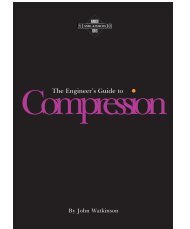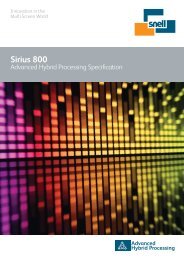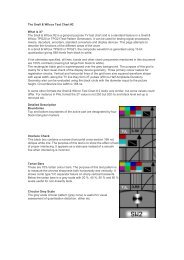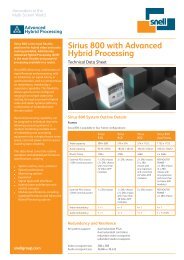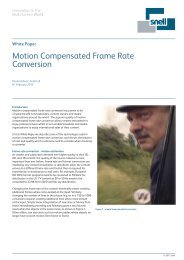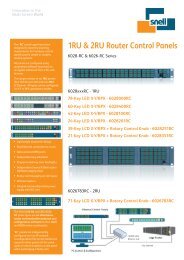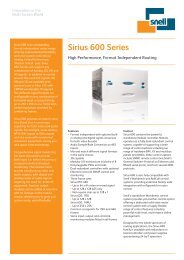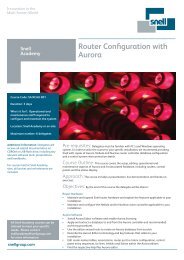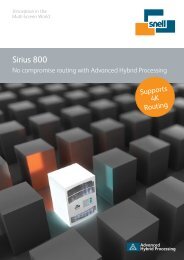The Engineer's Guide to Standards Conversion - Snell
The Engineer's Guide to Standards Conversion - Snell
The Engineer's Guide to Standards Conversion - Snell
You also want an ePaper? Increase the reach of your titles
YUMPU automatically turns print PDFs into web optimized ePapers that Google loves.
Vertical<br />
frequency<br />
S<strong>to</strong>p<br />
band<br />
Temporal<br />
frequency<br />
Triangular<br />
passband<br />
Fig 3.5.2<br />
In order <strong>to</strong> return <strong>to</strong> the baseband in an interlaced system a twodimensional<br />
filter with a triangular response is required.<br />
<strong>The</strong> interpolation process must incorporate a two dimensional filter having a<br />
triangular passband shown in Fig 3.5.2 which passes the baseband spectrum and<br />
rejects the images. <strong>The</strong> interpola<strong>to</strong>r works in two dimensions <strong>to</strong> express the input<br />
data at a different line and field rate. In some cases it is possible <strong>to</strong> construct a two<br />
dimensional interpola<strong>to</strong>r using two one-dimensional filters in series.<br />
Fig 3.5.3 shows how this can be done. Unfortunately the result must always be a<br />
rectangular two-dimensional spectrum and it should be clear that this is of no use<br />
whatsoever for filtering an interlaced signal. Fig 3.5.4a) shows the structure of a<br />
four field by four line standards converter. Field and line delays are combined so<br />
that simultaneous access <strong>to</strong> sixteen pixels is available.<br />
38



